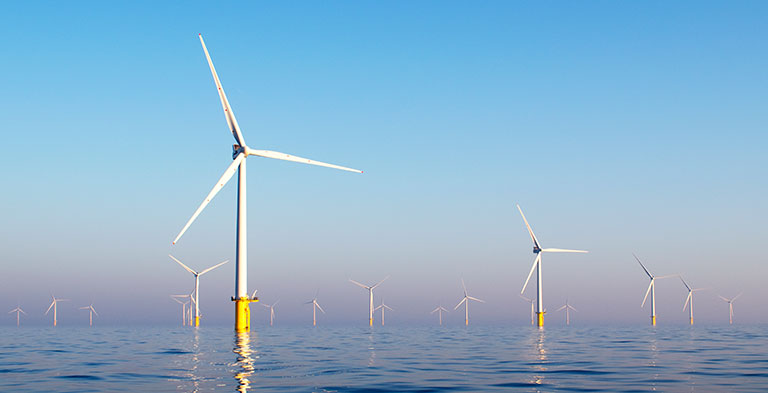Bill C-49: proposed changes to energy regulation for the Atlantic offshore

On May 30, 2023, the House of Commons completed the first reading of Bill C-49.[1] If enacted, Bill C-49 will amend the Canada-Newfoundland and Labrador Atlantic Accord Implementation Act[2] and the Canada-Nova Scotia Offshore Petroleum Resources Accord Implementation Act[3] (collectively, the Accord Acts). Currently, the Accord Acts govern joint offshore petroleum resource management and revenue sharing between the federal government and the governments of Newfoundland and Labrador and Nova Scotia, respectively.
Bill C-49 seeks to establish a new regulatory regime for renewable energy projects offshore Newfoundland and Labrador and Nova Scotia. These offshore renewable energy projects would include the exploitation, storage, transmission and related research and assessment of renewable resources, with Bill C-49 focusing on offshore wind, hydrogen and green ammonia.[4]
Changes to offshore regulators
Bill C-49 would rename the two regulators established under the Accord Acts; the Canada-Newfoundland and Labrador Offshore Petroleum Board would be renamed as the Canada-Newfoundland and Labrador Offshore Energy Regulator, and the Canada-Nova Scotia Offshore Petroleum Board would be renamed as the Canada-Nova Scotia Offshore Energy Regulator (collectively, the Regulators). These name changes would be consistent with other energy regulators in Canada (notably, the Canada Energy Regulator, Alberta Energy Regulator and British Columbia Energy Regulator).
Proposed amendments would enable the Regulators to regulate offshore renewable energy projects in a similar manner to how they currently regulate offshore petroleum development projects. This would include control over impact assessments and any required hearings, licensing, environment, health and safety matters, and decommissioning.
Changes to offshore licences
Bill C-49 would introduce a new submerged land licence to carry out offshore renewable energy projects. This single-licence tenure regime for offshore renewable energy projects would differ from the system of issuing multiple licences through the life-cycle of an offshore petroleum development project (including exploration, significant discovery and production licences). However, a submerged land licence would not be required for offshore renewable energy projects that do not require attaching a facility or structure to the seabed.[5]
In areas of the offshore where no submerged land licence is in force respecting a particular renewable energy resource, the Regulators could make a call for bids. A call for bids would specify certain details, such as licence parameters, types of technology, important dates, and other terms. The Regulators would then select and publish the successful bids.[6]
Impact assessment and consultation
If Bill C-49 is passed, environmental assessments of designated offshore projects will be completed pursuant to the Impact Assessment Act (IAA).[7] Bill C-49 would clarify the role of the Regulators with respect to impact assessments (IAs) of such projects, as well as regional and strategic assessments.
If an application for an authorization is made under an Accord Act in respect of a designated project under the IAA, the Regulators would not be able to make a determination respecting that application until either: (i) the Impact Assessment Agency of Canada (IAAC) decides that an assessment is not required; or (ii) the federal Minister of Environment and Climate Change (the Environment Minister) has issued a decision statement under the IAA.
Conclusion
Bill C-49 seeks to modernize Canada’s energy regulatory framework for the Atlantic offshore to foster investment in low-carbon energy projects, improve the utilization of Canada’s Atlantic offshore resources and support Canada’s transition to a lower carbon economy. These proposed changes are timely, as the Atlantic provinces are seeking significant interest in offshore renewable energy. For example, in April 2022, Newfoundland and Labrador lifted a 15-year moratorium on the development of wind power and, by October 2022, 73 wind energy projects had been proposed to power electrolyzers for hydrogen production in the province. Further, Nova Scotia has created an Offshore Wind Roadmap [PDF]and plans to offer leases for five gigawatts of offshore wind energy by 2025. Updating the Accord Acts would help to clarify some important elements of the regulatory processes applicable to such projects, and thereby hopefully facilitate development. However, in an increasingly strong (and international) competition for private investment dollars for energy transition related projects, the economic competitiveness of Canada’s Atlantic offshore will be in the spotlight.
Read the full Update posted on August 3, 2023.
[1] Bill C-49, An Act to amend the Canada–Newfoundland and Labrador Atlantic Accord Implementation Act and the Canada-Nova Scotia Offshore Petroleum Resources Accord Implementation Act and to make consequential amendments to other Acts, 1st Sess, 44th Parl, 2023 (first reading 30 May 2023) [Bill C-49].
[2] SC 1987, c 3 [“Canada-Newfoundland and Labrador Act”].
[3] SC 1988, c 28 [“Canada-Nova Scotia Act”].
[4] Canada, Parliament, House of Commons Debates, 44th Parl, 1st Sess, Vol 151, No 202 (30 May 2023).
[5] Bill C-49, cls 38 & 147.
[6] Bill C-49, cls 38 & 147.
[7] SC 2019, c 28, s 1 [IAA].